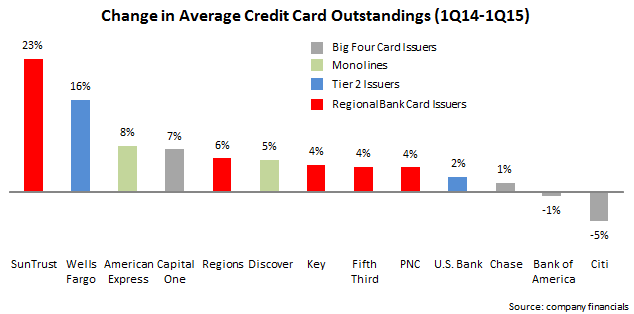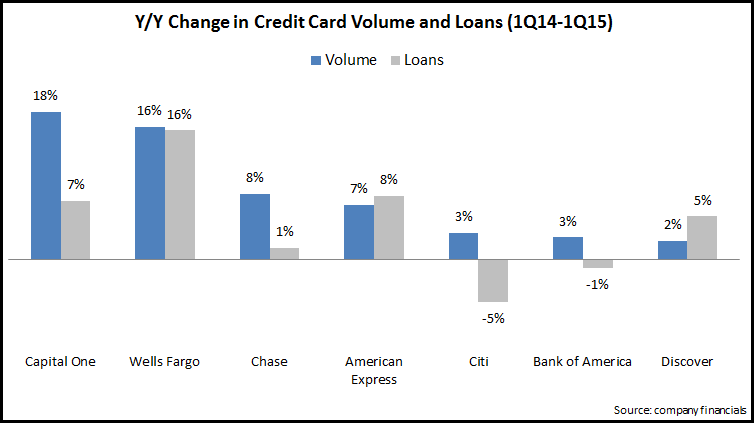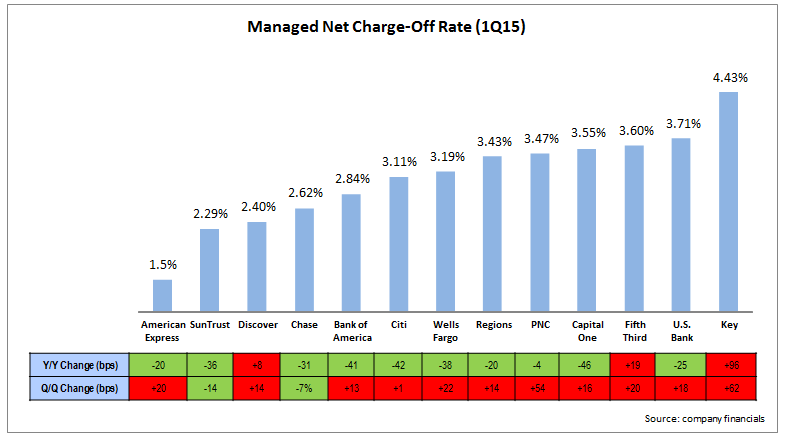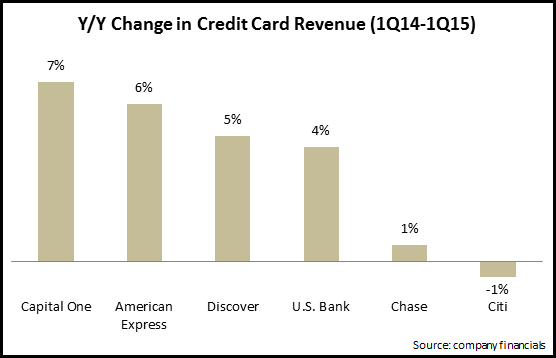The quarterly reports of the leading U.S. banks revealed a number of important channel trends:
- Mobile banking is continuing its strong growth. Three of the leading U.S. banks provided quarterly updates on active mobile banking users, and each reported double-digit y/y growth in 1Q15: Chase +22% to 20.0 million; Bank of America +13% to 16.9 million; and Wells Fargo +19% to 14.9 million. According to eMarketer, more than half of adult mobile phone users are expected to use mobile banking in 2015.
- Consumers are transitioning to self-service channels for a growing range of transactions. PNC reported that 50% of its consumer customers used non-branch channels for a majority of their banking transactions in the first quarter of 2015, up 7 percentage points y/y. PNC also reported that the non-branch (ATM and mobile) channel share of deposit transactions doubled from 20% in 1Q13 to 40% in 1Q15.
- Many banks are slowly shrinking their branch networks. Leading banks who reported significant branch reductions in the most recent quarter include: Citibank (down 61 during the quarter, as its pursued its strategy of consolidating its presence in 7 U.S. markets), PNC (-37 branches), Regions (-33) and Chase (-31 ). Although Bank of America has closed more than 800 branches over the past three years, the net branch decline fell to 20 in the first quarter of 2015.
- Some banks are growing branch numbers…and in-branch sales staff. In spite of the general perception that the branch channel is in the process of terminal decline, some banks are in fact acquiring or opening branches in order to capture growth opportunities. Huntington Bank reported the addition of 43 new in-store branches in Michigan. And even though Bank of America reduced branch numbers by 260 over the past year, it grew sales specialists by 5%.
- Banks remain committed to the branch network as consumers use multiple banking channels. While electronic self-service channels have a dominant share of everyday banking transactions, branches still play a key role in areas like new account generation, customer relationship management (including cross-sell), and branding. Wells Fargo claims that its most loyal customers are not those who have the most products, but rather those who use the most channels most often. It reported that mobile banking sessions rose 38% in 2014, while branch visits remained steady.



